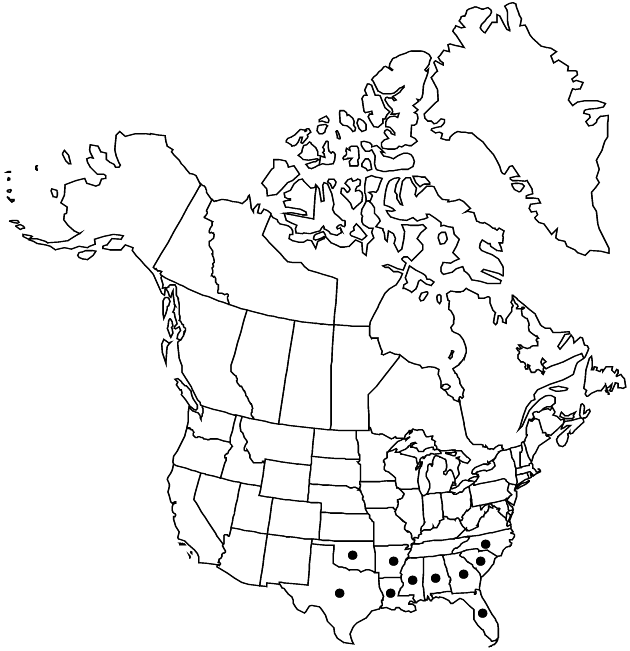Coreopsis basalis
Proc. Amer. Acad. Arts 51: 525. 1916.
Annuals, 10–50+ cm. Aerial nodes proximal to first peduncle usually 5–10+, distalmost 1–3 internodes 4–7(–10) cm. Leaves: basal and cauline on proximal 3/4–7/8 of plant heights; petioles 8–35(–120) mm; blades simple or 1(–2)-pinnately lobed with 3–9+ lobes, simple blades or terminal lobes elliptic or lanceolate to oblanceolate or linear, 25–55+ × (1–)2–9(–20) mm. Peduncles 6–15+ cm. Calyculi of lance-deltate to linear bractlets 6–9(–12+) mm. Phyllaries lance-ovate, 7–9+ mm. Ray laminae yellow, usually each with a proximal, red-brown to purple spot or band, 15–20+ mm. Disc corollas 3–4 mm, apices red-brown to purple. Cypselae 1.2–1.8 mm, wingless (margins ± inrolled adaxially, ± corky). 2n = 26.
Phenology: Flowering Apr–Jun.
Habitat: Sandy soils in open, often disturbed, places
Elevation: 10–300+ m
Distribution

Ala., Ark., Fla., Ga., La., Miss., N.C., Okla., S.C., Tex.
Discussion
Plants in the western part of the distribution of Coreopsis basalis usually have narrower lobes of leaf blades and narrower outer phyllaries; such plants have been treated as C. wrightii or as C. basalis var. wrightii.
Selected References
None.